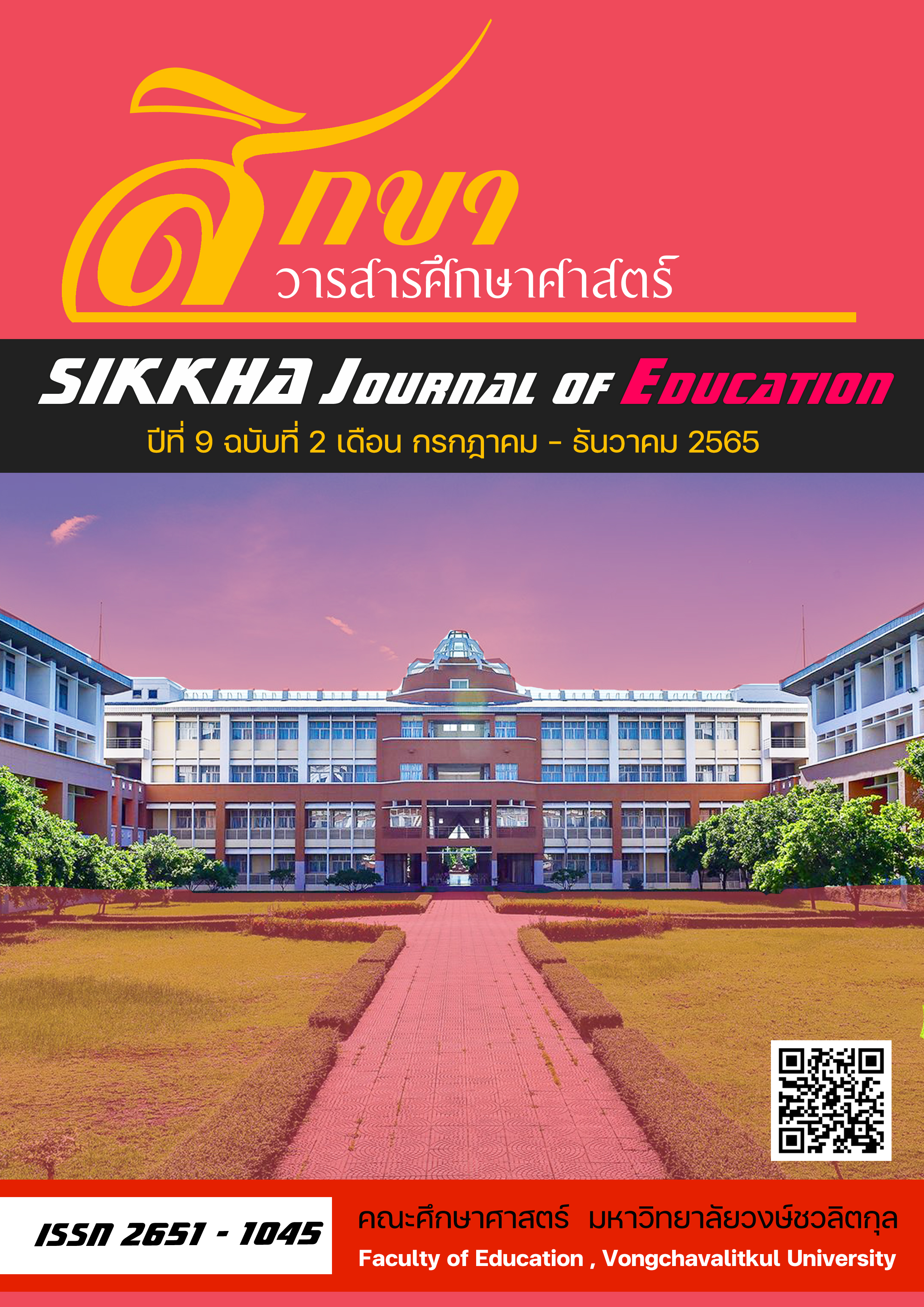ระบบร่างกาย สมอง และทิศทางการเรียนรู้ของเด็กไทยในยุควิถีชีวิตปกติใหม่
คำสำคัญ:
ระบบร่างกาย, โควิด-19, การเปลี่ยนผ่าน, ยุควิถีชีวิตปกติใหม่บทคัดย่อ
ในโลกที่เต็มไปด้วยความเปลี่ยนแปลงอย่างรวดเร็ว การศึกษาถูกเร่งให้เปลี่ยนแปลงตลอดเวลาด้วยหลากหลายปัจจัย โดยเฉพาะโควิด-19 ทำให้ระบบการเรียนในประเทศไทยที่ผู้เรียนจำเป็นต้องมีการปรับตัว รักษาเสถียรภาพความสมดุล ซึ่งเกิดขึ้นในตัวผู้เรียนทั้งในระบบร่างกาย และระบบของจิต เพื่อปรับสภาพร่างกายและจิตใจของผู้เรียนให้สามารถอยู่รอดให้ได้ท่ามกลางสิ่งแวดล้อมของโรคระบาดทั่วประเทศและทั่วโลกที่เปลี่ยนแปลงตลอดเวลาและมีระยะยาวนานนี้ รูปแบบการจัดการเรียนรู้ของสถานศึกษาในไทยมีการปรับประยุกต์ให้เหมาะสมกับบริบทที่แท้จริง คือ การจัดการเรียนรู้ในชั้นเรียน (On-site) ซึ่งใช้รูปแบบนี้เป็นหลัก โดยผสมกับรูปแบบอื่น ๆ คือ การจัดการเรียนรู้ผ่านโทรทัศน์ (On-air) การจัดการเรียนรู้ผ่านออนไลน์ (Online) การจัดการเรียนรู้โดยเยี่ยมบ้าน (On hand) ลักษณะการจัดการจะแตกต่างกัน ตามสภาพพื้นที่และความเสี่ยงในการติดเชื้อ สำหรับการจัดการเรียนรู้ในระบบออนไลน์ใช้ผ่านแพลตฟอร์มต่าง ๆ โดยมุ่งเน้นเป้าหมายให้การศึกษาเป็นเครื่องมือเพื่อยกระดับคุณภาพภายใต้สถานการณ์วิกฤตที่เกิดขึ้นเอกสารอ้างอิง
ประจักษ์ ปฏิทัศน์. (2562). ความคิดเชิงระบบและความคิดเชิงสร้างสรรค์. กรุงเทพฯ: สำนักพิมพ์จุฬาลงกรณ์มหาวิทยาลัย.
สำนักงานเลขาธิการสภาการศึกษา, กระทรวงศึกษาธิการ. (2563). เรียนออนไลน์ยุคโควิด-19: วิกฤตหรือโอกาสการศึกษาไทย. กรุงเทพฯ: สำนักมาตรฐานการศึกษาและพัฒนาการเรียนรู้, สำนักงานเลขาธิการสภาการศึกษา, กระทรวงศึกษาธิการ.
Bronfenbrenner, U. (1979). The Ecology of Human Development: Experiments by Nature and Design. Cambridge, MA: Harvard University Press.
Bronfenbrenner, U., & Morris, P. A. (2006). The Bioecological Model of Human Development. In R.M. Lerner (Ed). Handbook of Child Psychology: Vol 1 Theoretical Models of Human Development (6th ed). Hoboken, NJ: John Wiley & Sons.
Casey, B. J., Davidson, M., & Rosen, B. (2002). Functional Magnetic Resonance Imaging: Basic Principles of and Application to Development Science. Developmental Science, 5(3), 301-309.
Ekbalusika, F., Volkmann, D., & Barlow, P. W. (2004). Eukaryotic Cells and Their Cell Bodies: Cell Theory Revised. Annual Review of Botany, 94, 9-32.
Grau, C., & et al. (2014). Conscious Brain-to-Brain Communication in Humans Using Non-Invasive Technologies. PLoS ONE, 9(8), 1-6.
Hoff, E. (2003). The Specificity of Environmental Influence: Socioeconomic Status Affects Early Vocabulary Development via Maternal Speech. Child Development, 74(3), 1368-1378.
Johnson, M. D. (2017). Human Biology (8th ed). Kuala Lumpur: Pearson Education Limited.
Johnson, W., McGue, M., & lacono, W. G. (2006). Genetic and Environmental Influences on Academic Achievement Trajectories During Adolescent. Development Psychology, 42(3), 514-532.
Meyer, J. H. F., Land, R., & Baillie, C. (2010). Threshold Concepts and Transformational Learning. Rotterdam: Sense Publishers.
Marieb, E. N. (2015). Essentials of Human Anatomy & Physiology (11th ed). New York: Pearson Education Limited.
National Scientific Council on the Developing Child. (2010). Early Experiences can After Gene Expression and Affect Long Term Development: Working Paper No.10. Center on the Developing Child at Harvard University. Retrieved from http://www.developingchild.net
Shapshak, P. (2018). Artificial Intelligence and Brain. Bioinformation, 14(1), 38-41.
Starr, C., & McMillan, B. (2016). Human Biology (11th ed). Toronto: Cengage Learning.
Teplan, M. (2002). Fundamentals of EEG Measurement. Measurement Science Review, 2(2), 1-11.
Thanos, P. K., Wang, G. J., & Volkow, N. D. (2008). Position Emission Tomography as a Tool for Studying Alcohol Abuse. Alcohol Research & Health, 31(3), 233-237.
ดาวน์โหลด
เผยแพร่แล้ว
รูปแบบการอ้างอิง
ฉบับ
ประเภทบทความ
สัญญาอนุญาต
ลิขสิทธิ์ (c) 2022 สิกขา วารสารศึกษาศาสตร์

อนุญาตภายใต้เงื่อนไข Creative Commons Attribution-NonCommercial-NoDerivatives 4.0 International License.



